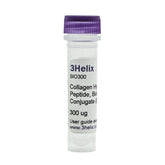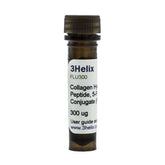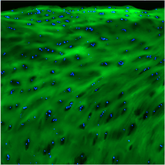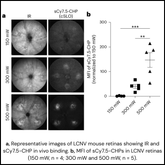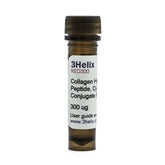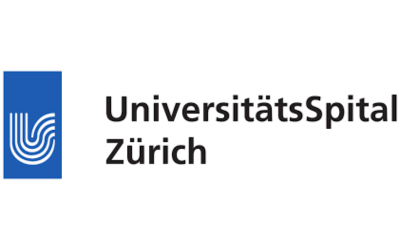Collagen Hybridizing Peptides Validate a Novel Bone Organoid Model
The quest to understand and replicate complex biological processes like bone remodeling pushes the boundaries of in vitro model development. Researchers are constantly seeking more physiologically relevant systems to unravel disease mechanisms and test novel therapeutics. A recent groundbreaking study by Park et al. in Science Advances (2021) introduced an innovative trabecular bone organoid model, offering new avenues for exploring localized bone remodeling. But at the heart of such sophisticated models lies a fundamental component: the biomaterial scaffold. For bone, this means collagen.
Collagen isn't just a passive scaffold; it's the primary organic component of bone, providing structural integrity, directing cell behavior, and influencing tissue development. When engineering bone tissues or creating biomaterials to mimic the native environment, the health of this collagen is paramount. Was it damaged during fabrication? Is it truly biomimetic? Answering these questions is critical, as compromised collagen can lead to misleading results and failed experiments. This is where the precision of 3helix's Collagen Hybridizing Peptides (CHPs) becomes indispensable.
This post delves into how Park et al. utilized CHPs to meticulously validate the biochemical integrity of their novel demineralized bone paper (DBP), showcasing why CHPs are an essential tool for any researcher working with collagen-based systems.
The Innovation: Demineralized Bone Paper (DBP) as an Osteoid Mimic
Continue Reading
The research team developed "demineralized bone paper" (DBP) by creating thin, durable, and semi-transparent slices from demineralized cortical bone. The goal was ambitious: to produce an osteoid-like biomaterial that not only replicated the dense structural collagen matrix of unmineralized bone but also preserved its crucial biochemical cues. This DBP would serve as the foundation for osteoblast culture, mineralization, and ultimately, the recreation of complex bone remodeling cycles in vitro.
However, the demineralization process itself, while necessary, poses a risk. Could the harsh chemical treatments damage the very collagen architecture they aimed to preserve? This pivotal question needed a definitive answer before the DBP could be confidently used as a reliable substrate for their intricate cellular studies.
Unveiling Collagen Health: CHPs Provide Critical Validation
To address the crucial question of collagen integrity, Park et al. turned to a highly specific molecular tool: 3helix's Collagen Hybridizing Peptides.
Why CHPs? Traditional methods for assessing collagen might offer bulk structural information but often lack the specificity to distinguish between intact, functional collagen and damaged, denatured fibrils at a molecular level. CHPs, however, are uniquely designed to bind specifically to unfolded collagen triple helices – the tell-tale sign of collagen damage or denaturation.
The Experiment and Its Clarity: The researchers applied fluorescently-labeled CHPs to their newly developed DBP. As a critical scientific control, they also tested CHPs on DBP samples that had been intentionally heat-denatured, ensuring they had a clear positive signal for damaged collagen.
The Revealing Results (Fig. 1H in the paper):
No Binding to DBP: The CHPs showed no significant binding to the standard DBP. This was a key finding, indicating that the collagen within the DBP retained its native, triple-helical structure, successfully weathering the demineralization and preparation process. The biochemical integrity was preserved.
Strong Binding to Damaged Control: Conversely, the CHPs strongly illuminated the heat-denatured DBP. This confirmed the CHPs' specificity and efficacy in detecting compromised collagen.
The Significance for the Study: The CHP analysis provided unequivocal evidence that the DBP was not just structurally similar to osteoid but was also biochemically sound. This validation was foundational, giving the researchers confidence that the subsequent cellular behaviors and bone remodeling processes observed on the DBP were genuinely representative of interactions with a physiologically relevant matrix, not artifacts of a damaged substrate.
Why This Matters for Your Research: The 3helix CHP Advantage
The application of CHPs in the Park et al. study is more than just a methodological detail; it's a powerful demonstration of how you can elevate the quality and reliability of your own research. If you're working with collagenous matrices, developing novel biomaterials, or investigating diseases involving collagen degradation, 3helix CHPs offer a distinct advantage:
Unparalleled Specificity: Target and visualize only damaged or denatured collagen. No more ambiguity about the true state of your collagen.
Essential Quality Control: Ensure the integrity of your collagen-based biomaterials before you invest time and resources in lengthy cell culture experiments or in vivo studies. CHPs can help you assess damage from processing, sterilization, or enzymatic activity.
Reliable Validation: Confidently validate the biochemical status of engineered tissues and scaffolds.
Insight into Pathology: Directly visualize collagen damage in models of disease, such as fibrosis, osteoarthritis, or tissue injury.
Ease of Integration: Our fluorescent CHPs are designed for straightforward application and can be visualized using standard fluorescence microscopy techniques already present in most life science labs.
Are you confident in the integrity of your collagen? Don't let uncertainty about your foundational materials compromise your research outcomes.
Driving Discovery with Confidence
The trabecular bone organoid model developed by Park et al. stands as a significant step forward in bone research, offering a sophisticated platform to dissect complex biological questions. While CHPs played a specific role in biomaterial validation, it underscores a broader principle: meticulous characterization of experimental components is non-negotiable for robust and reproducible science.
By ensuring the biochemical integrity of their DBP with 3helix CHPs, the researchers laid a solid groundwork for their subsequent fascinating findings on localized bone remodeling.
Ready to bring this level of precision to your collagen research?
Explore 3helix’s range of Collagen Hybridizing Peptides and see how they can empower your investigations: PRODUCTS
Read the full study by Park et al. (2021) here: Sci. Adv. 2021; 7: eabd6495
